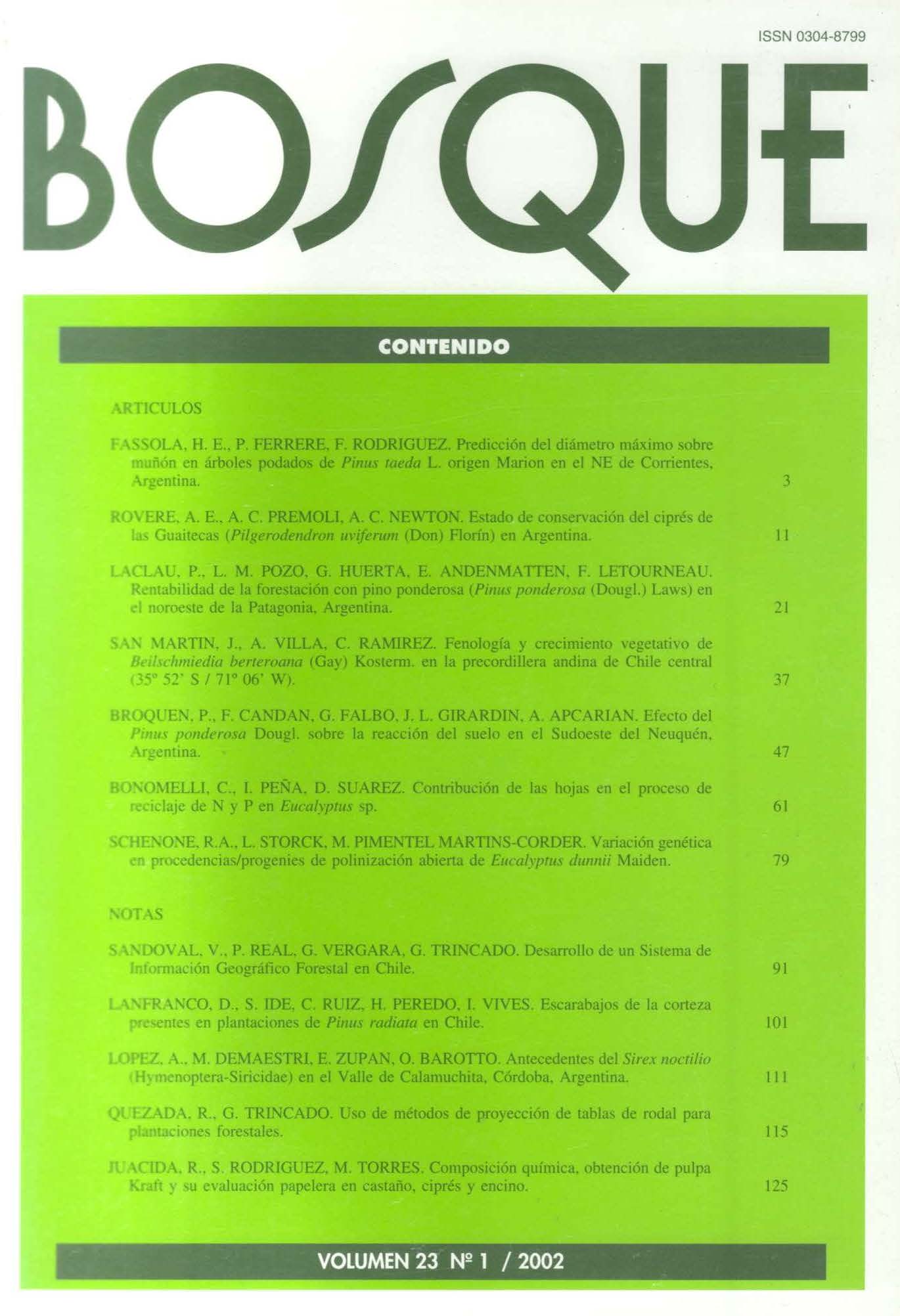Main Article Content
Jun 28, 2002
Abstract
A chemical composition pulp and papermaking evaluation was made of the species Cupressus torulosa (cypress) Quercus palustris (oak) and Castanea sativa (chestnut) which were introduced to Chile approximately fifty years ago. The analyses were done according to a procedure established by the TAPPI Norms. Pulp was processed separately in a Valley beater according to TAPPI Norm T 200 om-89 refined to a 45 °SR diainage. Each sample consisted of ten trees per species. The lignin content was 32.4% for cypress 23.7% for oak and 23.3% for chestnut trees. The Kraft process used to obtain pulp produced a lemnant lignin content (Kappa Index) of 31 for cypress and 20 for oak and chestnuts The classified yield was 46% lor cypress 48% tor oak and 45% for chestnuts. Traction resistance considered as the Traction Index with 45 °SR drainage reached a resistance of 154 in cypress 100 in oak and 106 k Nm/kg for chestnuts. The classified yield of each of the pulps and their physical chemical properties were in general lower than those obtained from commercial pulps of other species -for example Eucalyptus globulus. This study is part of the project Diversification of Forestry Species of Economic Interest financed by the Fund tor the Promotion of Scientific and Technological Development (FONDEF) between 1997 and 2000.


